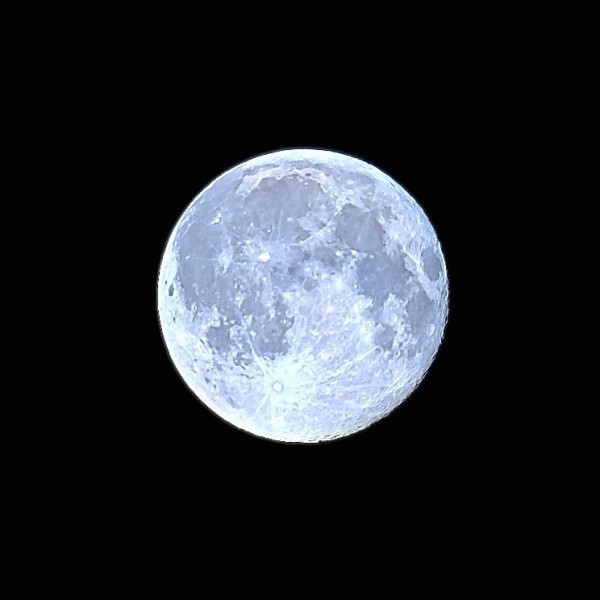
The May 18, 2019, full moon carries the name Blue Moon. According to folklore, a Blue Moon can be the second full moon of a month, or it can be the third of four full moons in a season. Remember, a season, to astronomers, is defined as the period of time between a solstice and an equinox, or vice versa. The May 18 moon is a Blue Moon according to the second definition. It’s the third of four full moons between the March equinox 2019 and the June solstice 2019. So we know there can be four full moons in a single three-month season. But is it possible to have only two full moons in one season?
The answer is, yes, it’s possible, but it’s extremely rare! It last happened during the Northern Hemisphere winter (Southern Hemisphere summer) of 1961/1962, between the December 1961 solstice and the March 1962 equinox. A full moon fell shortly before the December solstice in 1961 and after the March equinox in 1962, leaving only enough room for two full moons during that season.
Only two full moons in northern winter (southern summer) of 1961-1962:
Full moon: Dec. 22, 1961 (00:42 UTC)
Solstice: Dec. 22, 1961 (02:19 UT)
Full moon: Jan. 20, 1962
Full moon: Feb. 19, 1962
Equinox: Mar. 21, 1962 (02:30 UTC)
Full moon: Mar. 21, 1962 (07:55 UT)
When will it happen again? Well, it won’t happen at all in the 21st century (2001-2100), 22nd century (2101-2200) or 23rd century (2201-2300). To find out when the next season of two full moons will happen, keep reading …

When is the next season with only two full moons? It took some leg work to find out this answer. I finally directed a query to obliquity.com, and much to my delight, received an immediate response from Dr. David Harper. He wrote in an email to EarthSky:
It’s a very rare phenomenon indeed. Between 1962 and 3000, it happens only four more times, in the winters of 2314/5, 2333/4, 2686/7 and 2705/6. In each case – as in 1961/2 – there is a full moon less than five hours before the December solstice, and there are four full moons in both the preceding autumn and following spring.
I find it interesting that two lunar cycles seem to be at work when it comes to realigning two full moons with the winter season: the long-period lunar cycle of 372 years and the 19-year Metonic cycle. We elaborate about this 19-year Metonic cycle in our article about Blue Moons.
As you might have noticed, there’s only one season where a two-full-moon season is possible: Northern Hemisphere winter (Southern Hemisphere summer). This is the shortest season of the year, lasting about 89 days. Northern spring (southern autumn) lasts for nearly 93 days, northern summer (southern winter) lasts for nearly 94 days, and northern autumn (southern spring) 90 days.
For a winter season to have only two full moons, the December full moon has to occur just before the December solstice.
Also, the full moons from December until March must closely coincide with apogee – the moon’s farthest point from Earth in its monthly orbit. When full moons happen appreciably close to apogee, the time period between successive full moons is longer than average. The shorter season plus longer lunations (lunar months) conspire to give an extremely rare two-full-moon season.
Another Blue Moon? Since the saying once in a Blue Moon is suppose to indicate something exceedingly rare, or something that almost never happens, I propose that we consider calling the second of a season’s two full moons a Blue Moon! ;-)

By the way, why is the third of four full moons in a season the Blue Moon? Why not the fourth one? It’s because each month’s full moons already carry their own names.
Although fewer than 10 percent of the seasons harbor four full moons, the occurrence isn’t all that uncommon. A four-full-moon season happens seven times in 19 years. Or another way of looking at it, a total of 37 four-full-moon seasons take place in the 21st century (2001-2100).
Bottom line: A season with only two full moons is truly rare. It last happened during the Northern Hemisphere winter of 1961/1962 and won’t happen again until 2314/2315. This post discusses the very rare occurrence of two full moons in a single season and proposes yet another definition for Blue Moon!











